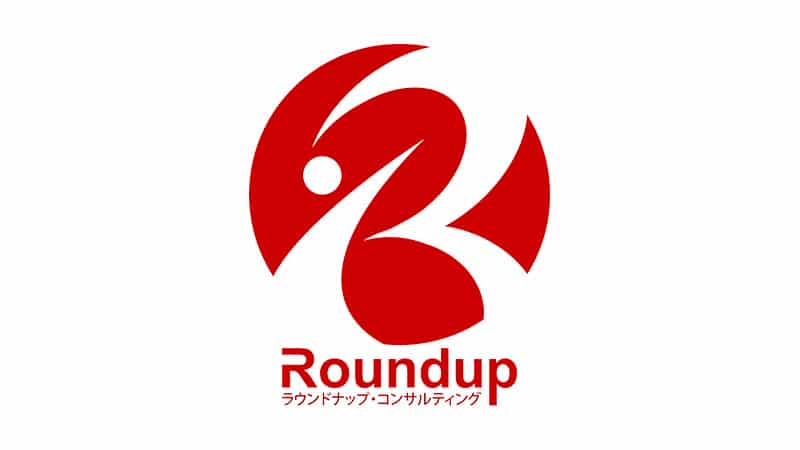Related FAQs
- Can small and medium-sized businesses (SMB) like ours copy the best practices of web marketing that we see so often?
- There is no one-size-fits-all method that works for all companies, and in particular, examples from large companies do not necessarily fit small and medium-sized businesses (SMB).
Many of the best practices and know-how in the world are based on the assumption that large companies with abundant resources are the best, and if small and medium-sized businesses (SMB) try to copy them as they are, it may not work. It is important to choose a method that is appropriate for your company’s size and situation, and that fits your stature. - I want immediate results, but I also need to think about the future. How can we strike a balance?
- It is important to have a perspective that simultaneously promotes short-term measures in front of you and the achievement of medium-term goals.
First, let’s do what we can do ourselves in the short term. In parallel with that, we should decide what we would like to look like in six months or a year, and then proceed to improve our internal skills and build a system with external parties to achieve that goal, which will lead to steady growth.
For more information

Many of the inquiries we receive regarding the use of the Web and HP are for “new customer development.
If we break it down into smaller pieces, there is the acquisition of customers not taken in existing markets and the entry into new markets (including startups).
What to do, then, depends on the size of the company and its human, material, and financial situation, and the best means to take at the time.
No one method, tool, or service works for all companies.
It makes no sense for small and medium-sized businesses(SMB) to do what strong medium-sized businesses, much less large businesses, do.
The information and methods circulating in the world may not always be the right ones for you. In fact, many of the case studies and know-how are being circulated with various agendas, and many of them are basically based on the assumption that you are a “medium-sized” or “large” company in order to get a high unit price project.
Small companies and teams with limited resources often find that their attempts to implement these tools either do not work or end up costing them money because they are not equipped with the right tools for their size.
Nevertheless, we will not make significant progress if we only do what we can do at hand.
It is important to implement short-term measures while working toward goals from a medium-term perspective
So what should we do?
What is important is to simultaneously focus on what is in front of us (in the short term) and on creating a medium-term vision of what it would look like to win if this were the case, and to work toward achieving that vision.
Specifically.
- In the short term, what we do is meaningful and we do what we can do.
- Decide what you want to be able to do six months or a year from now.
- While doing what we can do, we will improve our internal skills and build a system with external parties so that we can achieve number 2.
- Execute 2.
The first step is to repeat the process.
Furthermore, it is important to “create a web marketing structure.
Throwing all sales, including new acquisitions, outside the company is a big risk.
When I write this, some of you may think, “That’s a lot of work…can’t we just throw it somewhere else? It would certainly be pleasant, but it is not recommended, especially from the perspective of a small company developing new clients.
because
- Small and medium-sized businesses(SMB) are very close to their customers, so it is important to be able to immediately reflect the firsthand experience of the field on the website, etc., and it is impossible to throw this responsibility to an outside company.
- It is a big management risk to leave the part of the business where money comes in to an outside party.
That is why.
In conclusion, we need to be able to “borrow outside help as support while making it cost-effective and able to run on our own,” and that is what we need to aim for.
There is nothing wrong with getting outside help. Very few companies can do it from scratch by themselves.
The few companies that do have a good understanding of the relationship between marketing and sales are those that have been involved in direct marketing and other forms of marketing on their own through trial and error.
So, it’s a case of just bringing that know-how to the web afterwards. Only in places like this.
Most companies are initially more efficient in seeking outside advice and support. It costs at least one-third or one-fourth of the cost of hiring such personnel. It can also be a variable cost.
Based on this premise, we would like to share with you the measures that you should first consider in the short term, both online and offline, based on the assumption that you will be utilizing the Web.
Short-term: New customer development measures recommended as a first step
Basically, it is to “create a flow from customer attraction, to prospect follow-up, to initial sale and contract. Also, each of these should be managed numerically as much as possible so that bottlenecks can be identified.
Specifically.
1: Attracting customers
Establish a prospect development process from free front-end products (information booklets, know-how videos, trial products, one-coin products, free trial versions, etc.). In doing so, record the prospecting level on an ABC scale according to their response.
- Always recommend that product as the entry point product at customer contact points, such as on your website or in materials you distribute. Secure the first connection for future new contacts.
- Organize internal house lists (business cards, past inquiries, etc.) and guide them to free front-end products by email, phone, fax, etc., as much as possible, one-to-one.
- Strengthen the SEO of your website to attract customers from search engines (also recommended as an effective means during the prospect cultivation phase, which is discussed below, is to clearly describe on your website what you are asked by customers and what they lean forward to ask when you talk to them. (Because they are easily searchable and in need)
In the case of a local trade area (regional trade area), the customer is directed to the HP from the flyers and DMs that are regularly sent out, and is guided to the front-end products and the contents of the HP.
- Unlike flyers, which have limited paper space, HP will read more and more of the content you seek and increase your prospects. (*Smartphone compatibility required)
- Flyers and direct mailings should also incorporate the concept of direct marketing and incorporate the concept of nurturing prospects by building trust and guiding them to sales on a regular basis, such as three times for information and once for sales, rather than always making sales.
2: Cultivate prospective customers: Put information on your website first anyway.
- Think of the goals as “all concerns can be addressed on the website” and “communicate everything that is communicated in a face-to-face sales meeting on the website.
- Based on this premise, we will consolidate internal information and develop it into content on the website, even if it is only text, such as FAQs (frequently asked questions), testimonials (customer testimonials), and information on what customers like about the products and services (labeling such as strengths and features depends on the customer; for B2B, it will be solidified; for B2C, it will be words that the decision makers will use when talking with others around them). (words used by decision makers when discussing with others)
- Improve HP content based on access analysis and actual customer feedback. The materials to be taken to sales offices should be based on the content of the website. Then, feedback the responses from customers to the website, which will then be fed back to the sales materials. Create a chain of improvement.
- If you do this, you should naturally see an increase in inquiries from your website. If the number does not increase, it is faster to have a third party diagnose the problem and check for any major misunderstandings or problems.
- As a prerequisite, it is essential to have a website that can be updated to some extent by ourselves. If we had to spend tens of thousands of yen per page to have a production company create each page, it would never be cost-effective. In addition, the pressure to create pages will keep the person in charge from working on it. Now, we recommend building with WordPress. Or you can use Wix or Jimdo.
- At this point, you only need to pay attention to the minimum details of SEO, and you are not at the stage of tuning. Specifically, you can get by with just “pressing the target keyword” and “making the title SEO-friendly”.
3: Initial sales and repeat business
- Whenever possible, we will try to publish the case studies of business negotiations and contracts that have been concluded through the website. Three clear case studies will make all the difference; one or two will not be credible enough.
- The case study should be face to face, something that shows the story of how you got the good results. A mere survey, etc. is not meaningful enough. Imagine making it into an interview article. This is a great asset. Be sure to ask for permission to publish in sales materials and on the website.
- Follow up thoroughly with those who have signed contracts. In the process, elicit as much information as possible about what was troubling them during the consideration stage and with whom they were comparing their options. Then, we investigate the competition, and unify the website, sales talks, DMs, flyers, etc. to create a winning approach when compared to the competition. Repeat testing.
- Rather than focusing on service, the first priority is how to turn those who have signed a contract into repeat customers or referrals, and then adjust the service accordingly. Do not stick to the image of the customer in your mind or the existing service.
- If you can’t devote that much resource to the website, then limit the website to items that have a high profit margin and profit itself. If you can’t devote that much resources to HP, then you should limit yourself to HPs with high profit margins and high profit margins. This is because, especially in the initial stages, it is difficult to achieve high profit margins with HP. An exception is digital content.
About Web Advertising
I dared not mention advertising this time because, as with direct mail and flyers, if the general purpose is not calculated properly, it can cause unexpected expenses or, conversely, unexpected opportunity losses.
We recommend that you start advertising only after you understand the overall marketing process and can get the numbers, while properly consulting with a partner who can support you or, in your own case, using the support of Google or Yahoo!
It is not at all true that you will get a response if you send it out. Often the response will be worse than with flyers, direct mail, etc. It is definitely advisable to consult with us at first.
The place to consult does not have to be an advertising agency just because it is advertising. Some production companies can handle it, and many companies like ours that focus on consulting can also handle it.
About Sales Support Tools
Tools to support sales, such as SFA and CRM, vary in cost and functionality.
And there are also some that are not a good fit. For example, some tools have an implicit assumption that they are only effective for companies that can conduct their own over-the-phone outbound sales.
What do you need and what do you want to streamline? We recommend that you find out what you need and what you want to streamline by doing it manually at first, and then make the investment. There are inexpensive products available, but as you increase the number of accounts, the cost will increase to several tens of thousands of yen/month. Please be careful not to be pushed into a sales pitch.
The key is to know that there is no magic or hidden weapons, and to face them head on.
When it comes to the Web, we often wonder, “Isn’t there some secret technique or magic? “If I do it just a little bit, won’t I get some results?” I think it’s a little bit too easy to think “There must be some trick or magic in the Web.
But 20 years ago, there is no such thing today. There is only what is called “gachinko” competition. For this reason, it is not a good idea to enter the market from the opposite side of the fence.
The leno or reverse strategy is to backstop because it is done and mastered by doing the right thing.
First, let’s face web marketing and the sales from it head on. If you have the determination and motivation to do so, we can fight together.
Only a company that can pay more than 1 million yen per month to a company to which it throws the money and can appropriately comment and give its opinion on the usage and forecast of the money can be acceptable in a roundabout way.
Let’s not be hasty and make the right efforts to develop new customers through the Web.
Also, corporate sales (B2B) and B2C are different. However, they share the same point of creating a web marketing system and approaching from the other party’s point of view. And that is what we must build first.
Let’s not think about the details yet, but let’s start with the basics. If your main activities have been “exhibitions,” “tele-appointments,” “dive sales,” and “consulting sales,” we would like to work with you to build a second pillar.
Please contact us if you have any questions.


